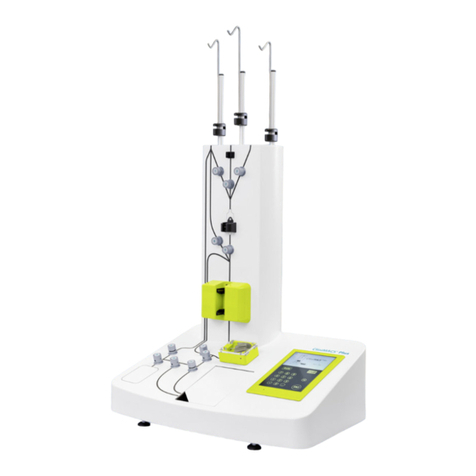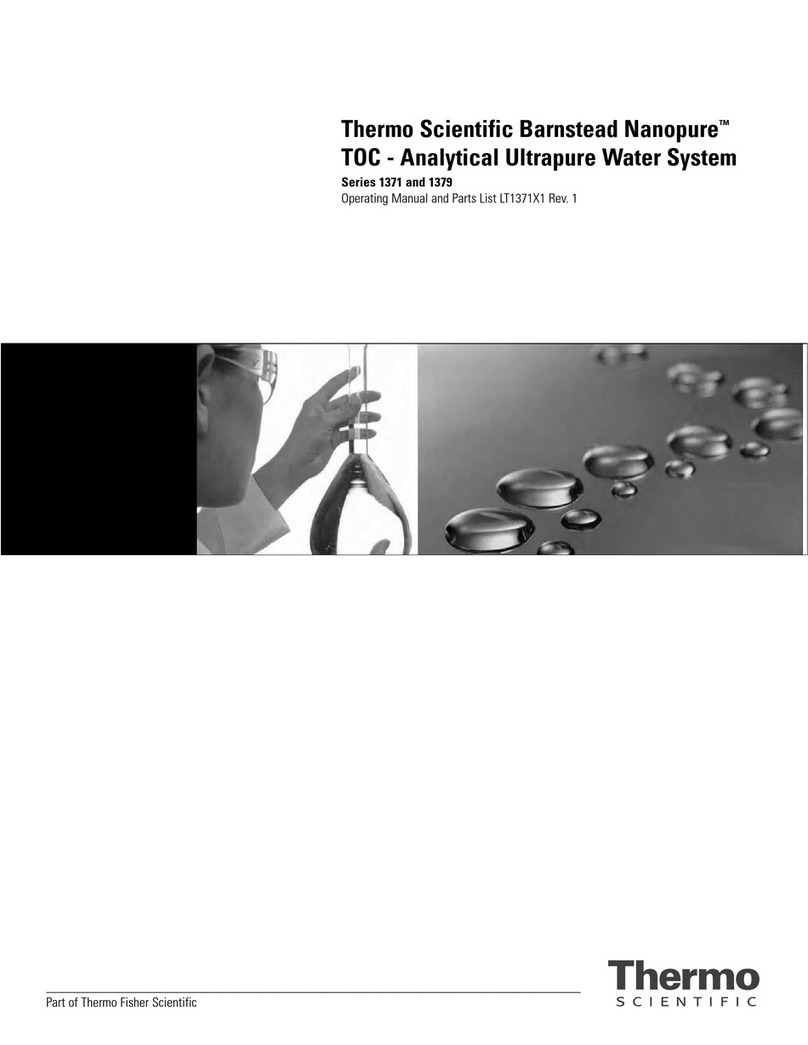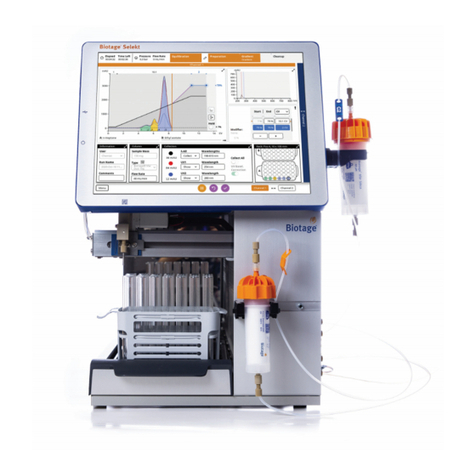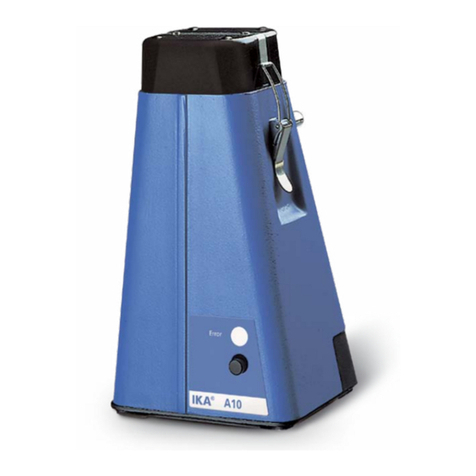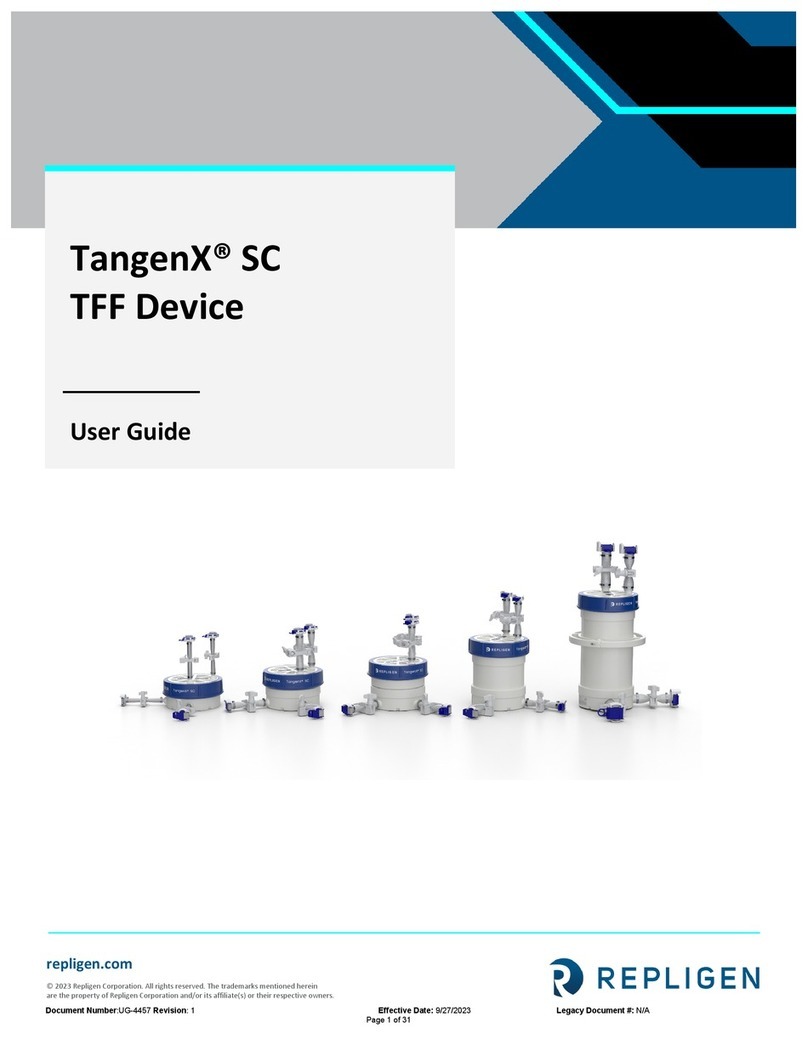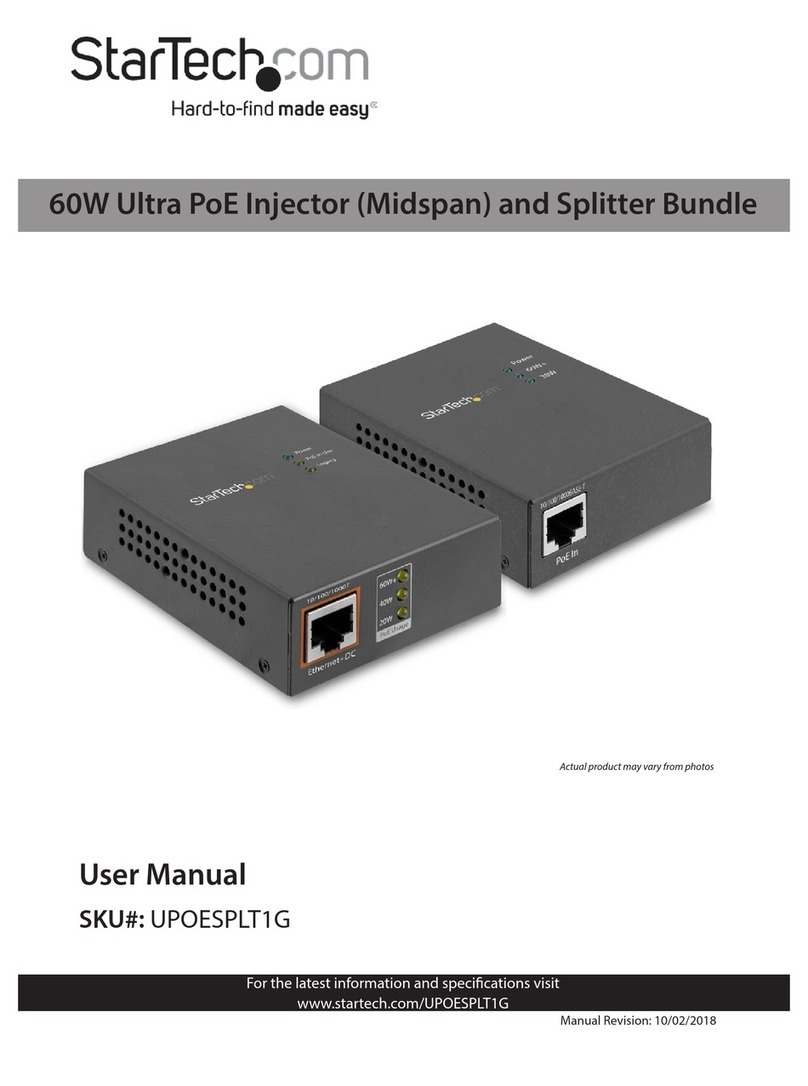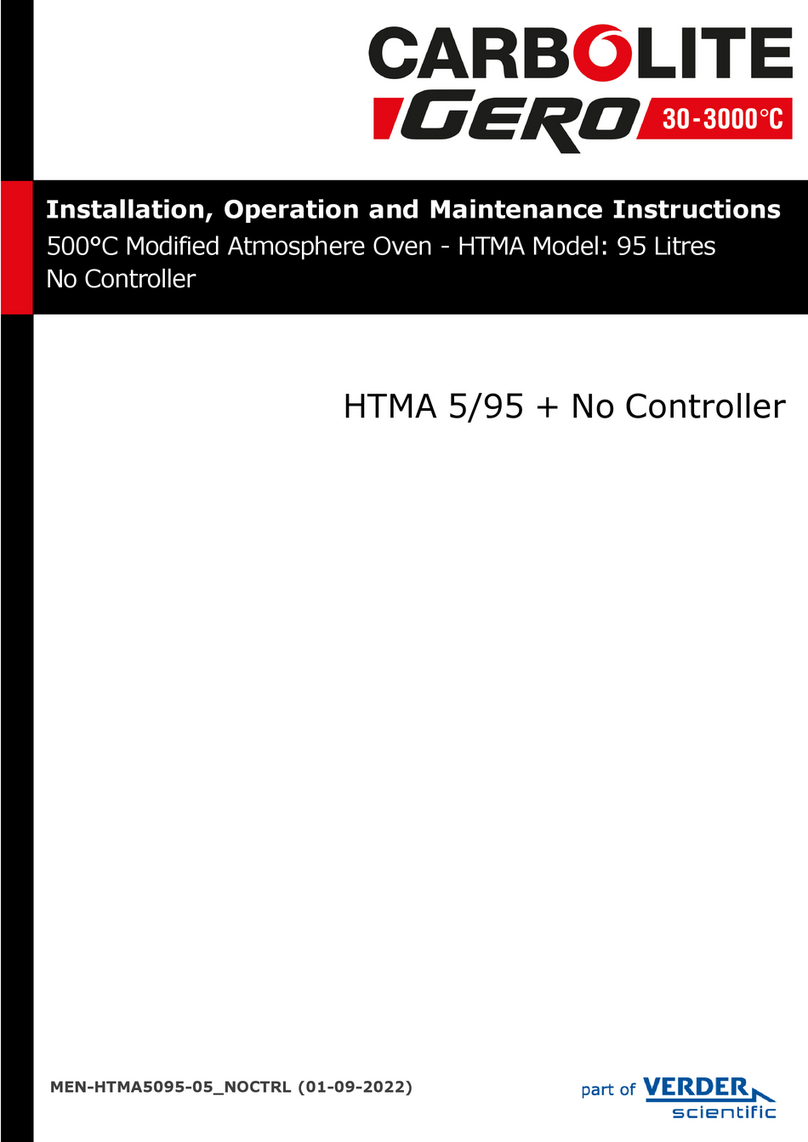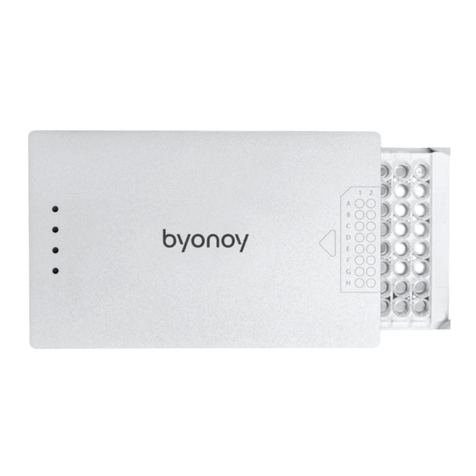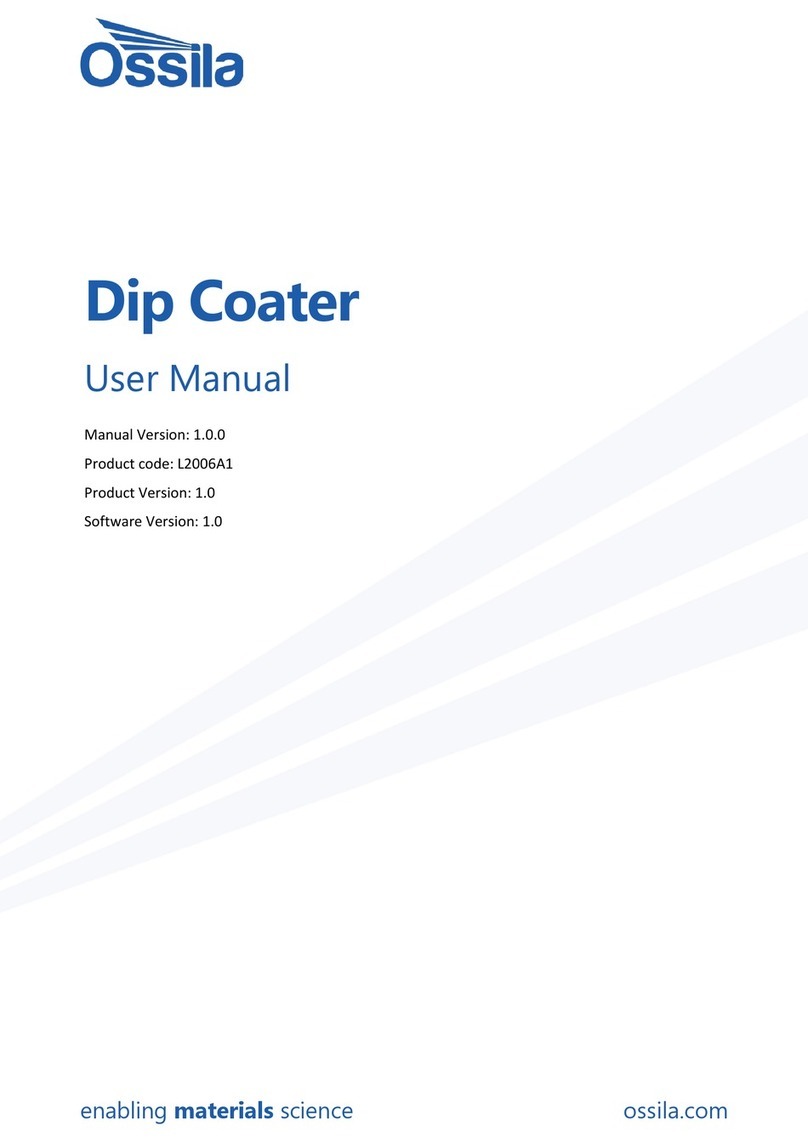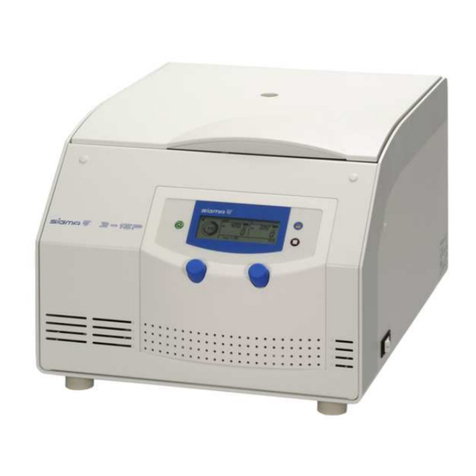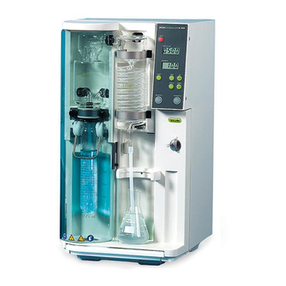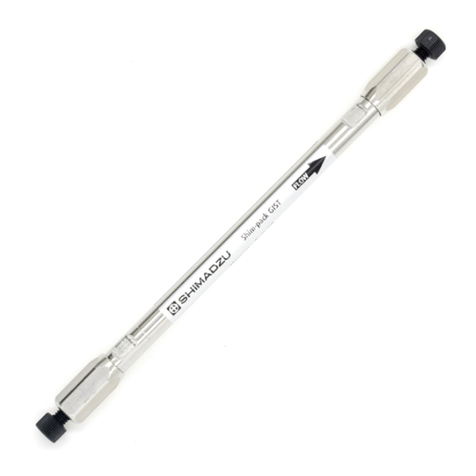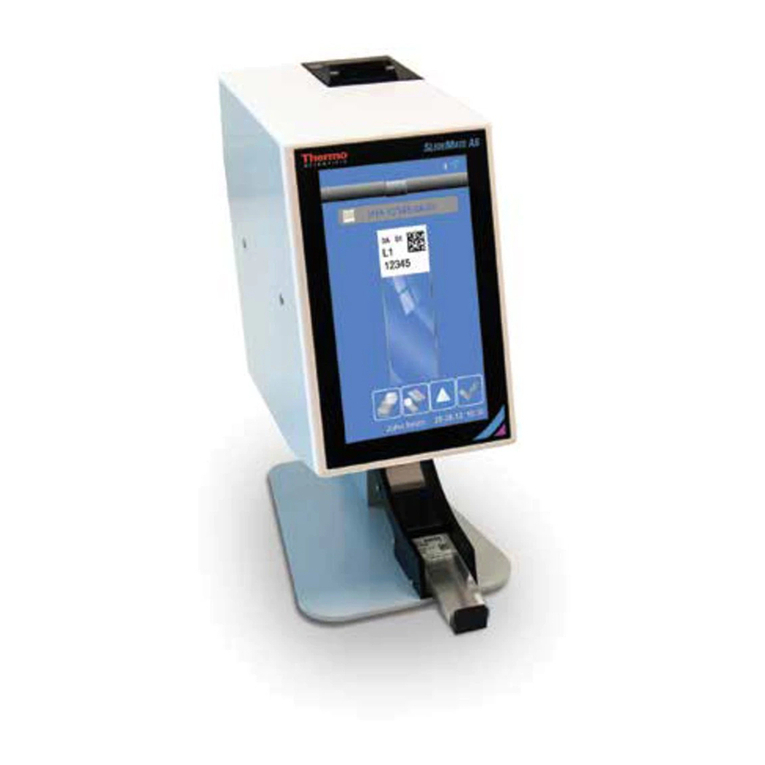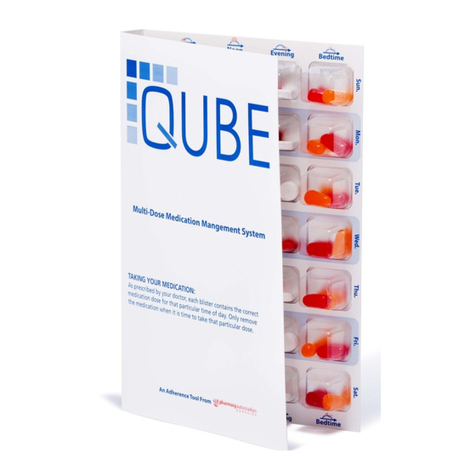Miltenyi Biotec MACSima User manual

MACSima™ Imaging System
Hardware user manual

Copyright © 2022 Miltenyi Biotec and/or its affiliates. All rights reserved.
No part of this user manual may be reproduced, stored in a retrieval system, transmitted, published, or distributed in any form or by any means,
electronically, mechanically, by photocopying, microfilming, recording, or otherwise, without the prior written consent of Miltenyi Biotec; however,
notwithstanding the foregoing, the owners of the MACSima™ Imaging System may make copies solely for purposes of training personnel in the use
and servicing of the unit within their business or organization. Maximal care has been taken by Miltenyi Biotec in the preparation of this user manual.
However, Miltenyi Biotec shall not be liable for any technical or editorial errors or omissions contained herein or for incidental or consequential
damages in connection with the furnishing, performance, or use of this document. The information in this document is provided “as is” without
warranty of any kind, and is subject to change without notice. MACS, MACSima, MACSQuant, MACSwell, REAscreen, and the Miltenyi Biotec logo are
either registered trademarks or trademarks of Miltenyi Biotec and/or its affiliates in various countries worldwide. All other trademarks mentioned in this
document are the property of their respective owners and are used for identification purposes only. Unless otherwise specifically indicated, Miltenyi
Biotec products and services are for research use only and not for therapeutic or diagnostic use.

MACSima™ Imaging System
User manual
Original instructions
Issued: 2022-04
140-005-904.02
Miltenyi Biotec B.V. & Co. KG
Friedrich-Ebert-Straße 68
51429 Bergisch Gladbach
Germany
Phone +49 2204 8306-0
Fax +49 2204 85197
www.miltenyibiotec.com

Read the chapter Important safety information and all
other information in this user manual before using the
instrument
Before using the MACSima Imaging System, read the chapter Important safety information and all other
information contained in this user manual including any safety and operating instructions. Pay special
attention to all warnings displayed on the instrument. Failure to read and follow these guidelines could lead to
improper or incorrect usage and result in damage to the instrument. Improper usage could also cause severe
personal injury, death, unpredictable results, instrument malfunction, and premature wear to components
shortening the lifetime of the instrument. Such actions may void your warranty. Keep the user manual and any
other safety and operating instructions provided with the instrument in a safe place accessible to all users for
future reference.
If you have a serious concern regarding the safe use of your instrument, contact your authorized Miltenyi
Biotec service provider or call Miltenyi Biotec Technical Support.
2

Content
1 Important safety information 5
2 Introduction 15
2.1 Introduction 15
2.2 Intended use 15
3 Installation 17
3.1 Components 17
3.1.1 Components included in the delivery 17
3.1.2 Consumables 18
3.2 Unpacking and installation 18
4 Switching on and off 19
4.1 Switching on the instrument 19
4.2 Switching off the instrument 19
4.3 Long-term storage 19
5 Monitoring the instrument 21
5.1 LED signals 21
5.2 Door handle illumination 21
5.3 Bottle illumination 21
6 Preparing the instrument 23
6.1 Inserting MACSwell 1/2/4 Imaging Frames 23
6.2 Inserting a MACSwell 24 Imaging Plate 23
6.3 Inserting a MACSwell Deepwell Plate 23
6.4 Inserting a REAscreen plate 24
6.5 Inserting the vials 24
7 Maintenance 25
7.1 Cleaning the instrument 25
7.2 Bottle exchange 25
7.2.1 Exchanging fluid bottles 25
3

1
IMPORTANT SAFETY INFORMATION
5
1
Important safety information
General safety instructions
THIS CHAPTER DESCRIBES POTENTIALLY HAZARDOUS SITUATIONS ASSOCIATED WITH THIS INSTRUMENT AND
PROVIDES IMPORTANT SAFETY INFORMATION TO MINIMIZE THE RISKS AND PROTECT YOURSELF AND OTHERS.
This chapter provides important information for your personal safety and the correct use of the instrument.
Read and observe all instructions carefully before proceeding with the installation and use of the instrument.
Observe general safety practices in addition to this user manual.
• Use this instrument only as indicated in this user manual to avoid personal injury and property damage.
• Keep this user manual in a place that is always accessible to all users.
• Follow local working area safety instructions and laboratory policies and standards for health, safety, and
prevention of accidents.
• Ensure safe working conditions and provide for sufficient light.
• Ensure that the power switch and the plug of the power cable of the instrument are easily accessible.
• Ensure that the power cable plug is close to the user.
• If it is necessary to cut the power supply, unplug the cable from the power outlet and contact an authorized
Miltenyi Biotec service provider or Miltenyi Biotec Technical Support.
• Read the instructions in the chapter Important safety information before using the instrument.
• Check the instrument before each use for visible damage.
• In case of severe accidents, damages to the instrument, or if smoke or flames appear, cut the power supply
immediately.
• Do not use the instrument if it has been dropped or is damaged. Contact Miltenyi Biotec Technical Support
immediately.

Hazard levels
Signal words are used to warn against hazardous situations and property damages. The following signal words
are used in this user manual.
or WARNING! indicates a hazardous situation that, if not avoided, could result in death or serious
injury.
or CAUTION! indicates a hazardous situation that, if not avoided, could result in minor or moderate
injury. It is also used to warn against unsafe practices.
or NOTICE indicates information considered important but not hazard related (e.g. messages relating
to property damage).
Symbols
SAFETY WARNING: THE DOCUMENTATION MUST BE CONSULTED IN ALL CASES WHERE THIS SAFETY
SYMBOL IS USED ON THE INSTRUMENT
ELECTRICAL HAZARD
BIOLOGICAL HAZARD
CHEMICAL HAZARD
MOVING PARTS
SHARP ELEMENTS
OPTICAL RADIATION
CRUSH HAZARD
TRIPPING HAZARD
HOT SURFACE
ELECTROSTATIC DISCHARGE (ESD) SENSITIVE DEVICE
WEEE (WASTE OF ELECTRICAL AND ELECTRONIC EQUIPMENT)
READ THE USER MANUAL BEFORE USING THE INSTRUMENT
ON (POWER ON)
OFF (POWER OFF)
1
IMPORTANT SAFETY INFORMATION
6

1
IMPORTANT SAFETY INFORMATION
7
WEIGHT
SERIAL NUMBER
TYPE NUMBER
ORDER NUMBER
MANUFACTURER
DATE OF MANUFACTURE
EUROPEAN CONFORMITY MARKING
UNITED KINGDOM CONFORMITY ASSESSED MARKING
ETL CERTIFICATION MARK: PRODUCT MEETS CONSENSUS-BASED STANDARDS OF SAFETY,
REQUIRED BY THE OCCUPATIONAL SAFETY/HEALTH ADMINISTRATION (OSHA), DETERMINED BY
THE NATIONALLY RECOGNIZED TESTING LABORATORIES (NRTL) INTERTEK
Safety labels
Notice the hazard points and safety symbols of the instrument.
• Keep safety labels and safety markings clean and legible.
• Inspect the safety labels and safety markings regularly and replace them if they are not legible or identifiable
from a safe viewing distance.
• Contact Miltenyi Biotec for replacement labels.
Figure 1.1: Hazard areas and safety symbols on the front side of the instrument. The symbol "optical radiation" applies to service
personnel only.

Figure 1.2: Hazard areas and safety symbols on the rear side of the instrument.
Figure 1.3: Safety symbols in the sample chamber. The symbol "optical radiation" applies to service personnel only.
1
IMPORTANT SAFETY INFORMATION
8

1
IMPORTANT SAFETY INFORMATION
9
Figure 1.4: Safety symbols on the left side of the MACSima Imaging System.
Electricity and fire hazards
ELECTRICAL HAZARD
Electric shock, short circuit, overheating, fire, and explosion may lead to death or serious injury.
This may lead to burns or severe personal injury.
The housing of the instrument reduces the risk of an electric shock and short circuits.
• Do not open the instrument housing.
• Do not disassemble the instrument.
• Do not use the instrument if it has been dropped or is damaged.
Cables and power supplies
The instrument has a three-wire electrical grounding plug with a third pin for grounding. Using the instrument
with other than the supplied cables is potentially hazardous.
• Do not use the instrument if the power cable is damaged.
• Only insert the plug into a grounded power outlet. Do not force the plug into an incorrect power outlet.
• Operate the instrument only from a power source that meets the electrical specifications mentioned on the
marking plate. If you have questions about the type of power source to use, contact the Miltenyi Biotec
Technical Support or your local electricity supplier.
Liquids inside the instrument
Liquids inside the instrument can cause short circuits.
• Unplug the instrument before cleaning it.
• Do not use the instrument if liquids have entered the inside of it.
• Protect the instrument against spilled liquids.
• Do not allow liquids to enter the inside of the instrument.

• Clean up spilled liquids immediately.
• Use only small amounts of cleaning agents on a soft cloth to wipe the instrument. Do not spray or pour liquid
cleaning agents onto or into the instrument.
Humid and dusty environments
A change in the environmental temperature may cause condensation inside the instrument. Humidity,
condensation, or dust inside the instrument can cause short circuits.
• Use the instrument only indoors.
• Do not use the instrument in a wet location or areas with high humidity or condensation.
• After moving the instrument from a cold environment to room temperature, wait for the instrument to
dehumidify before using it.
Mechanical hazards
MOVING PARTS
Risk of crushing or cutting.
Robotic needle arm
The robotic needle arm moves while the instrument is in operation.
• Do not open the top access cover while the instrument is in operation.
• Keep away from the robotic needle arm while the instrument is in operation.
• Do not obstruct the movement of the robotic needle arm.
• Avoid touching the needle arm to prevent decalibration.
Fluidic system
Syringe pumps are a part of the fluidic system. They move while the instrument is in operation.
• Do not operate the instrument without the finger guard.
• Do not obstruct the movement of the syringe pumps.
• Keep away from the syringe pump while the instrument is in operation.
SHARP ELEMENTS
Risk of cutting.
Damaged disposables
Damaged disposables can have sharp edges.
• Follow the instructions in the datasheet for each disposable.
• Do not use damaged disposables.
• Dispose damaged disposables carefully.
1
IMPORTANT SAFETY INFORMATION
10

1
IMPORTANT SAFETY INFORMATION
11
Biological hazards
BIOLOGICAL HAZARD
Contamination or infection may lead to death or serious injury, depending on the material used.
Biological material
All biological material must be considered potentially infectious.
• Wear personal protective equipment (such as gloves, safety glasses, etc.) as indicated in the safety data sheet
for the particular substance.
• If hazardous or potentially infectious material has been spilled or leaked from the system, decontaminate the
affected area.
• Do not continue to use contaminated accessories or parts of the instrument. Contact Miltenyi Biotec
Technical Support immediately.
• Aerosols might leak from the system. Protect mouth and nose if processing hazardous or potentially
infectious material that can be transmitted through the air.
• Operate the instrument in a biological safety cabinet suitable for the used specimen if hazardous or
potentially infectious materials are processed.
• Accessible surfaces (protective housing and sample and reagent chamber) need to be cleaned after each use
to avoid accumulation of substances carried in aerosols.
• To avoid spilling of liquids, remove all caps and lids from any sample or reagent container before you place
them into the instrument.
• As an exception, do not remove the aluminum sealing foils on antibody plates. Follow the instructions in the
datasheet for each disposable.
• Take care when handling samples and reagents.
• Provide for sufficient light.
Waste
All liquid and solid waste must be considered hazardous.
• Follow local regulations regarding waste disposal.
• Label waste bottles with the provided biohazard stickers.
Equipment damage
Defective or inadequate equipment can cause a biological hazard. Some decontamination methods may
damage the instrument.
• If parts of the instrument are damaged, unplug and do not use the instrument until damaged parts are
replaced. Contact Miltenyi Biotec Technical Support, if necessary.
• Follow the instructions in the datasheet for each disposable.
• Use only 70% ethanol or isopropyl alcohol for disinfection.
• Before the instrument is being disposed or transported into a lower safety level laboratory, follow local
regulations by ensuring an appropriate decontamination suitable for the appropriate specimen. Take care
that decontamination methods and agents other than those described here may damage the device, but may
be necessary for appropriate decontamination. The specifications apply only to the instrument before such
decontamination.

Chemical hazards
CHEMICAL HAZARD
Substances and reagents can be hazardous.
Hazardous substances and reagents
• All safety measures in section Biological hazards also apply to any hazardous substances and reagents that
may be present in the sample.
• Use any substances and reagents only as stated in the respective safety data sheet.
• Operate the instrument in a fume hood if hazardous substances and reagents are processed.
Optical radiation hazards
OPTICAL RADIATION
Exposure to optical radiation may cause eye injury.
High-power LEDs
The instrument uses high-power LEDs for fluorochrome bleaching. The instrument has a multicolor light unit
with high-power LEDs for fluorochrome excitation. The LEDs are secured by a protective housing. The high-
powered LEDs emit UV light. Without the protective housing, the high powered LEDs and the multicolor light
unit are in Risk Group 2.
• Do not remove the protective housing.
2D barcode reader
The instrument has a 2D barcode reader that uses powerful LEDs for illuminating the reading area. The light is
not visible.
• Do not remove the protective housing.
Bottle illumination
Powerful LEDs are used to illuminate the bottles. According to the international standard IEC 62471 this lamp
system is in excess of the Exempt Risk Group and there are risks dependent on the use of the instrument. The
system classifies as Risk Group 1 with a retinal blue light hazard. The exposure hazard value (EHV) measured at
a distance of 20 cm from the bottle holders is 0.91, hazard distances are 51 cm for Exempt Risk Group and 8 cm
for Risk Group 1.
• Do not look directly at LED radiation or LED radiation reflected from a mirrored surface.
• Keep your eyes at a distance of at least 8 cm from the bottle holders.
• Do not remove the bottle holders.
Thermal hazards
HOT SURFACE
Hot surfaces can cause burns.
Sample container
Wrong sample container may become hot if exposed to the LEDs.
• Use only MACSwell disposables approved by Miltenyi Biotec for processing samples with the instrument.
1
IMPORTANT SAFETY INFORMATION
12

1
IMPORTANT SAFETY INFORMATION
13
Environmental hazards
TRIPPING HAZARD
Tripping can cause injuries.
• Provide for sufficient light.
• Check the environment around the instrument before each use for trip hazards such as cables lying on the
floor.
Ergonomic hazards
CRUSH HAZARD
Risk of crushing.
Heavy instrument
• Place the instrument only onto stable, even, and vibration free tables or laboratory benches.
• Only use tables or laboratory benches that support a weight of 200 kg.
• Do not install the instrument yourself.
• Only trained Miltenyi Biotec personnel or personnel authorized by Miltenyi Biotec is allowed to install the
instrument.
ERGONOMIC HAZARD
Risk of tearing or straining muscles.
• Do not move the instrument yourself.
• Only trained Miltenyi Biotec personnel or personnel authorized by Miltenyi Biotec is allowed to transport the
instrument.
Servicing and transportation
Servicing
Improper servicing or repair of the instrument or use of unauthorized parts can cause malfunction of or
damage to the instrument. This can cause hazards to users. Unless otherwise specifically noted in this user
manual or other Miltenyi Biotec documentation, do not service the instrument yourself. Servicing and repair
must be performed by Miltenyi Biotec certified and qualified service personnel. If the instrument needs
servicing, decontaminate the instrument to remove any hazardous material. If you have questions regarding
proper decontamination or shipment, contact Miltenyi Biotec Technical Support for assistance.
Transportation
The instrument should be transported with care in packaging specified by Miltenyi Biotec. Internal damage can
occur if the instrument is subjected to excessive vibration or if it is dropped. If the instrument needs to be
shipped back to the manufacturer for service, contact Miltenyi Biotec for instructions and packaging materials.

Disposal
WASTE OF ELECTRICAL AND ELECTRONIC EQUIPMENT (WEEE) CUSTOMER INFORMATION
Dispose of your end-of-life Miltenyi Biotec products in accordance with the applicable WEEE and hazardous
waste disposal legislation, which may differ by country or region. Electrical equipment may contain hazardous
substances that may have a serious detrimental effect on the environment and/or human health. All
equipment must be specifically collected and treated by designated waste facilities and by qualified WEEE
compliance schemas. By ensuring that you dispose of your unwanted electrical and electronic equipment
according to the applicable WEEE and hazardous waste disposal legislation, you are helping to preserve our
natural resources and protect human health. Miltenyi Biotec is committed to protecting the environment.
Miltenyi Biotec offers product end-of-life return programs in many countries and partners with licensed WEEE
compliance schemes throughout the world. Miltenyi Biotec takes back your end-of-life Miltenyi Biotec
equipment for recycling free of charge. Before shipping the instrument back to the manufacturer for disposal,
decontaminate the instrument to remove any hazardous material. The terms and availability of this offer vary
by geography because of differences in regulatory requirements. Note that, depending on the type and use of
your equipment, additional requirements may apply. For more information, or if you wish to dispose of your
end-of-life Miltenyi Biotec equipment, contact your local Miltenyi Biotec representative or Miltenyi Biotec
Technical Support.
1
IMPORTANT SAFETY INFORMATION
14

2
INTRODUCTION
15
2
Introduction
2.1 Introduction
The MACSima Imaging System is an ultrahigh-content imaging system based on fluorescence microscopy. It
uses the principle of iterative, antigen-based antibody staining to acquire hundreds of markers on one sample
and multiple samples at a time. The instrument consists of a liquid handling system, the sample and reagent
stage and an integrated microscope with which serveral types of fixed samples ranging from tissue sections to
single cells can be analyzed in a fully automated manner. Thus, the MACSima Imaging System can generate
ultrahigh-content data, while it is still convenient and easy to use.
2.2 Intended use
The MACSima Imaging System is a laboratory equipment for high-content fluorescence microscopic analysis of
cell and tissue preparations. The instrument stains samples, acquires high resolution images of the stained
samples, erases the staining, and repeats this cycle fully automatically. These images can be merged to a high
content representation of the sample. One single sample can be stained with several fluorescence markers in
each cycle and sequentially with up to several hundred fluorescence markers.
The MACSima Imaging System is for research use only in laboratory environment. It is to be used by laboratory
professional users only.
Figure 2.1: The MACSima Imaging System, front side.

Figure 2.2: The MACSima Imaging System, rear side.
2
INTRODUCTION
16

3
INSTALLATION
17
3
Installation
3.1 Components
3.1.1 Components included in the delivery
Component
MACSima Imaging System
1 × bottle closure for MACSima System Buffer and empty bottle
1 × bottle closure for MACSima Running Buffer and empty bottle
1 × bottle closure for MACSQuant/MACSima Storage Solution and empty bottle
1 × bottle closure and waste bottle
1 × sheet of biohazard labels for labeling waste bottles
Power cable
Keyboard with trackball
Regular keyboard
Regular mouse
Hardware user manual
Software user manual
Table 3.1: Components included in the delivery.

3.1.2 Consumables
Consumable* Order no.
MACSwell Sample Carriers for ultrahigh-content imaging
MACSwell One Imaging Frames 130-124-673
MACSwell Two Imaging Frames 130-124-675
MACSwell Four Imaging Frames 130-124-676
MACSwell One Small Imaging Frames 130-126-794
MACSwell 24 Imaging Plates 130-124-677
Manual antibody panel preparation
MACSwell Deepwell Plates 130-126-865
MACSwell Sealing Foils 130-126-866
Pre-defined antibody panels
REAscreen MAX Kit, human, FFPE *
REAscreen MAX Kit, human, PFA *
REAscreen MAX Kit, mouse *
Ready to use reagent kits
MACSima Stain Support Kit, human 130-127-574
MACSima Stain Support Kit, mouse 130-127-575
MACSima Buffers
MACSima System Buffer 130-125-315
MACSima Running Buffer 130-121-565
MACSQuant/MACSima Storage Solution 130-092-748
MACSima Buffer Starting Kit 130-125-753
Table 3.2: Consumables that have to be ordered separately. * For an up-to-date list list and details, visit www.miltenyibiotec.com.
3.2 Unpacking and installation
Protect the instruments from shock and vibration. Do not place vibrating devices (e.g. vortex mixers) on the
same table as the MACSima Imaging System. This could impair the quality of the results.
Only Miltenyi Biotec service personnel is allowed to unpack and install the instrument. Please contact Miltenyi
Biotec Technical Support for further information.
Before installation, ensure that your site is properly prepared. The instrument must be installed on the
MACSima Table or a standard laboratory tables that can carry a weight of at least 200 kg and is certified by
Miltenyi Biotec. Allow a minimum of 15 cm free space to the rear side and both sides of the instrument. Allow a
minimum of 100 cm free space in front of the instrument. All sides of the instrument must be accessible for
service and maintenance.
The plastic tube end at the lower edge of the housing must not be closed or lifted above the table surface.
3
INSTALLATION
18
Table of contents
Other Miltenyi Biotec Laboratory Equipment manuals
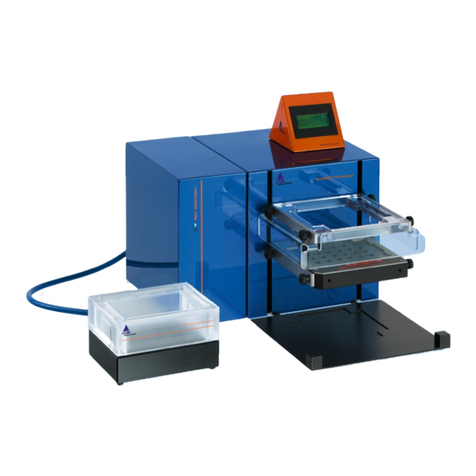
Miltenyi Biotec
Miltenyi Biotec MultiMACS Cell24 Separator Plus User manual
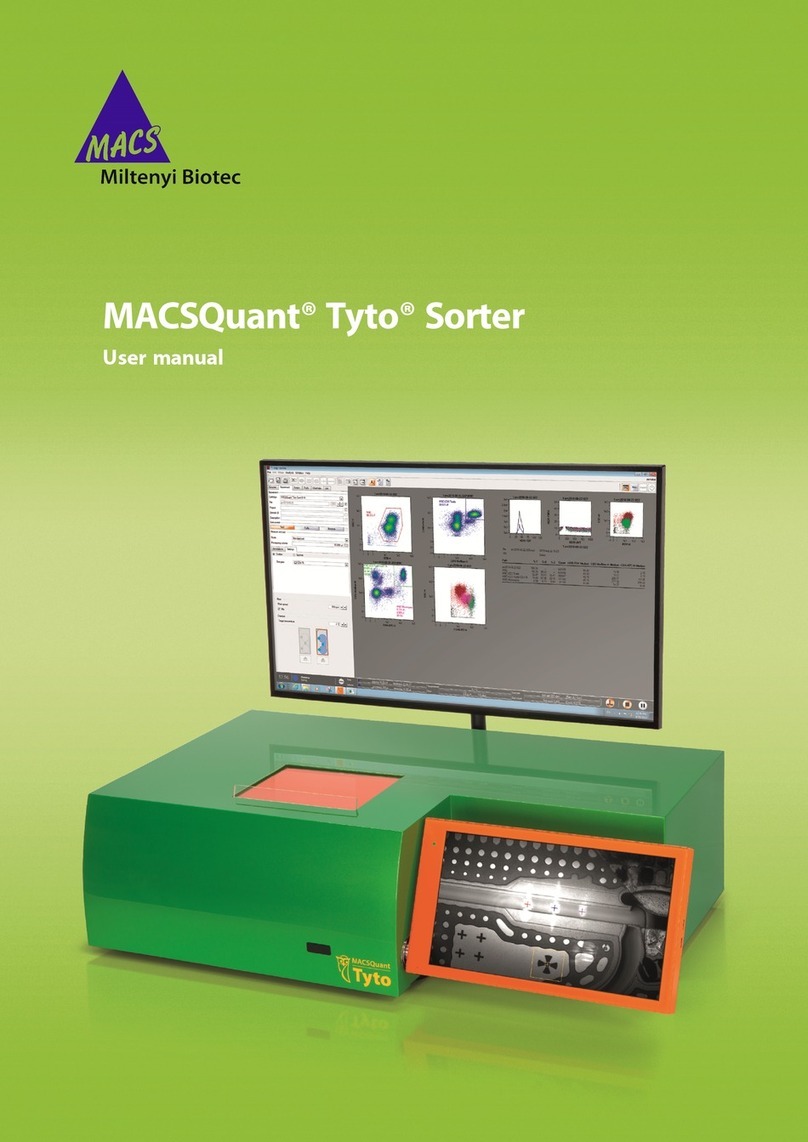
Miltenyi Biotec
Miltenyi Biotec MACSQuant Tyto Sorter User manual
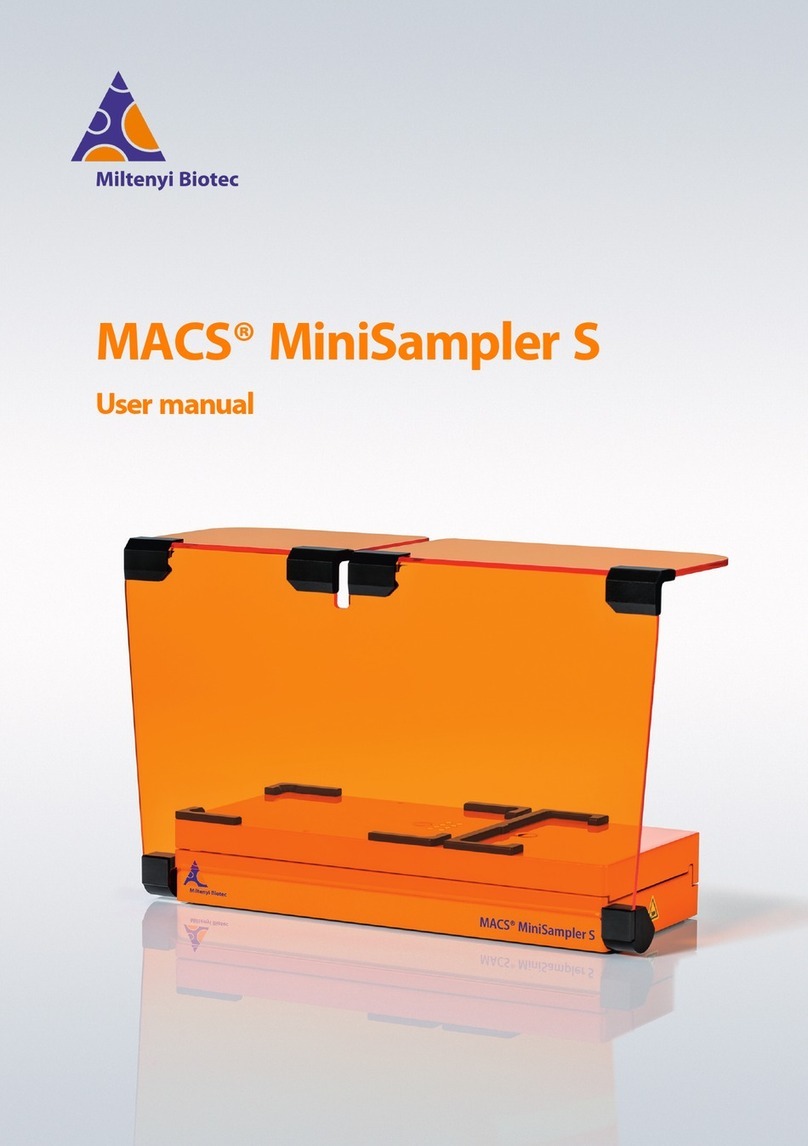
Miltenyi Biotec
Miltenyi Biotec MACS MiniSampler S User manual
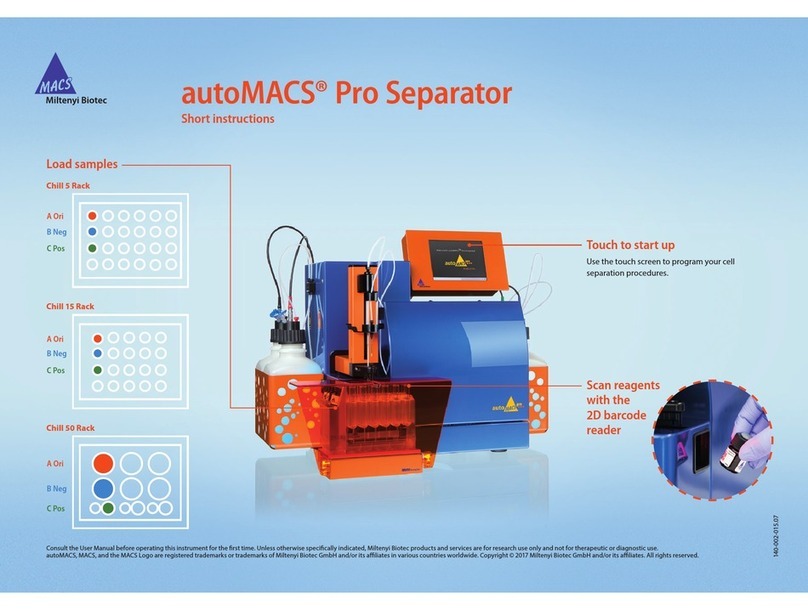
Miltenyi Biotec
Miltenyi Biotec autoMACS Pro Separator Manual
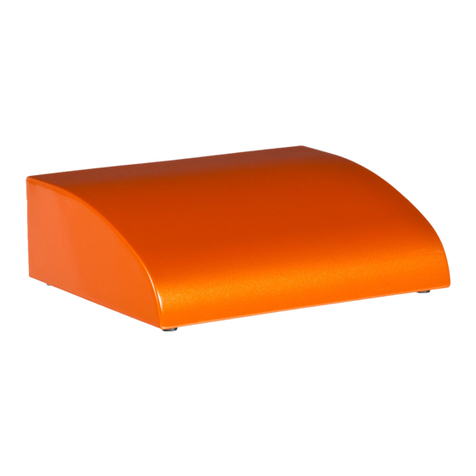
Miltenyi Biotec
Miltenyi Biotec MACSQuant Buffer Supply Station User manual
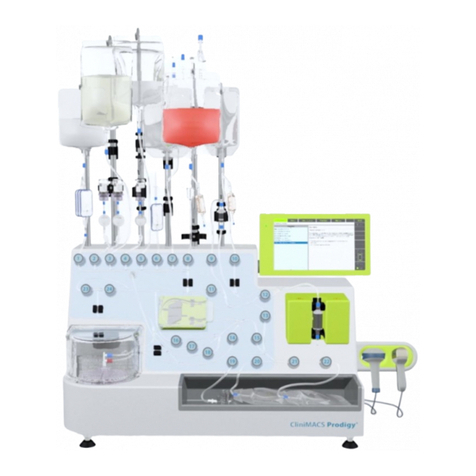
Miltenyi Biotec
Miltenyi Biotec CliniMACS Prodigy User manual

Miltenyi Biotec
Miltenyi Biotec CliniMACS Plus System User manual

Miltenyi Biotec
Miltenyi Biotec MACSmix Tube Rotator User manual
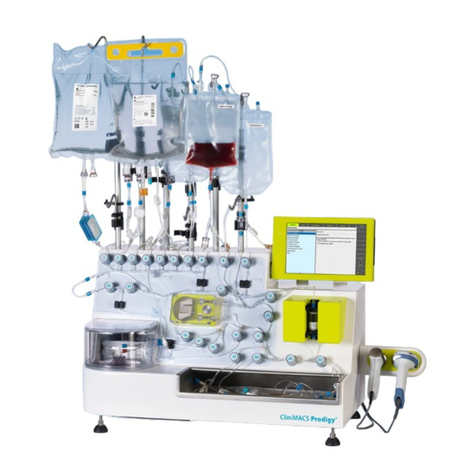
Miltenyi Biotec
Miltenyi Biotec CliniMACS Formulation Unit User manual
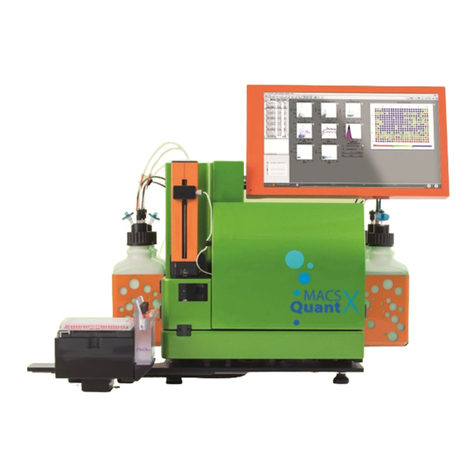
Miltenyi Biotec
Miltenyi Biotec MACSQuant X User manual

